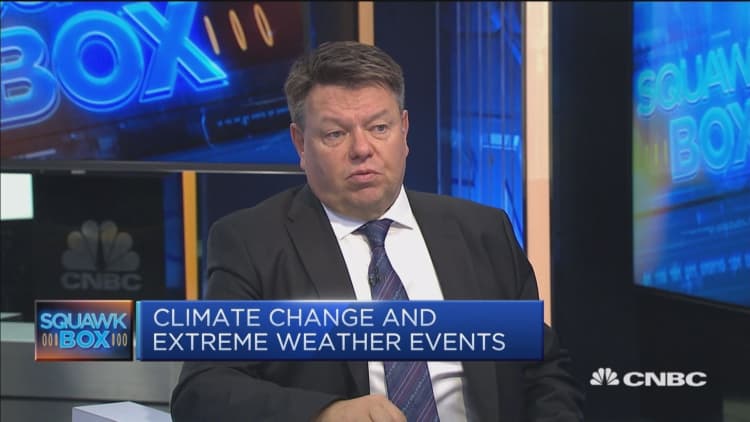You've read it in the headlines: Temperatures are rising and icebergs are melting.
And as more evidence points to the growing influence of climate change, one area is sure to be impacted: big business.
As evidence, take PG&E's recent bankruptcy filing following the wildfires that ravaged California over the past two years.
The company's equipment has been blamed for contributing to those disasters. But another factor — the hotter climate and drier terrain in California and broader region — also contributed to the problem.
"Any utility in those regions can be at risk for fires because they have a ton of infrastructure spread across a very fire-prone landscape," said Julie Gorte, senior vice president for sustainable investing at Impax Asset Management and Pax World Funds.
And the potential risks tied to climate change don't end there.
"Any company can face climate risk, and I think that is the 800-pound gorilla," Gorte said.
The good news for individual investors is that there are ways that you can invest with the intention of helping to make a difference and you can still make a profit doing it.
We are seeing signals that the climate is changing in ways that we don't like that are affecting us now, not a generation from now.Meg Voorhesdirector of research, US SIF
In 2018, money managers had $3 trillion in assets invested with climate change and carbon factors in mind, according to the US SIF: the Forum for Sustainable and Responsible Investment.
"We are seeing signals that the climate is changing in ways that we don't like that are affecting us now, not a generation from now," said Meg Voorhes, director of research at US SIF.
There are ways you can align your investments with companies and funds that are making the environment a priority.
Where to start
There are a number of equity and bond mutual funds and exchange-traded funds that have been created with preserving the environment in mind.
The US SIF provides a list of its members' funds on its website, where you can track their performance and get details about how their strategies address climate issues.
Before you add any new funds to your portfolio, you should first take a look at what you already own, said Lily Trager, director of impact investing at Morgan Stanley Wealth Management.

Then, start thinking about how you can realistically adjust your portfolio while still keeping your investment goals in mind. That means keeping in mind how much risk you want to take on, the time horizon for your investments, minimum investment requirements and potential tax implications, Trager said.
"[It's] really understanding the traditional tenets of asset allocation, portfolio construction and having a financial partner, an advisor or wealth manager, who can help you navigate this process," Trager said.
Do your research
Before you put your money in a fund and while you're invested in it, you will want to keep tabs on whether the investment managers are fulfilling their promises to keep climate change in mind.
Read up on the fund's analysis and selection techniques. You can also look up a fund proxy voting policy and how the management has voted in its past votes.
Also monitor individual companies in your portfolio by checking to see what, if anything, they report on climate change, Gorte suggested. A good place to start is the company's Form 10-K, which they file with the SEC, to see what on climate change, if anything, they include.
Beyond that, a company may have filed a sustainability report, or what's known as a Task Force on Climate-related Financial Disclosure, or TCFD. Those reports, which were first created a couple of years ago, are starting to catch hold with more companies, Gorte said.
Other resources to check include Morningstar, which now rates funds based on their sustainability, or how well they are making environmental, social and corporate governance strategies a priority. That includes a designation for low-carbon funds.
In addition, As You Sow, a non-profit shareholder advocacy group, ranks select publicly-traded companies based on how well they are addressing clean energy.
Use your voice
As you decide where to put your money, keep in mind that all companies are likely to be touched by climate change.
Risks abound in everything from fossil fuels to natural gas, because of the possibility of fugitive emissions with fracking, according to Gorte. Even internet cables that are buried at sea level and carry the backbone of the internet are at risk as waters rise.
"There's nowhere to hide," Gorte said. "You just can't pretend it isn't happening anymore."
Beyond putting your money behind the cause, you can do one more thing: Let your concerns about climate change be heard by contacting a company or fund directly.
"If you're an investor in a mutual fund, you still have a voice," Voorhes said. "You can contact the fund management, the investor relations committee, and say you want to see more thoughtful voting on climate issues."


